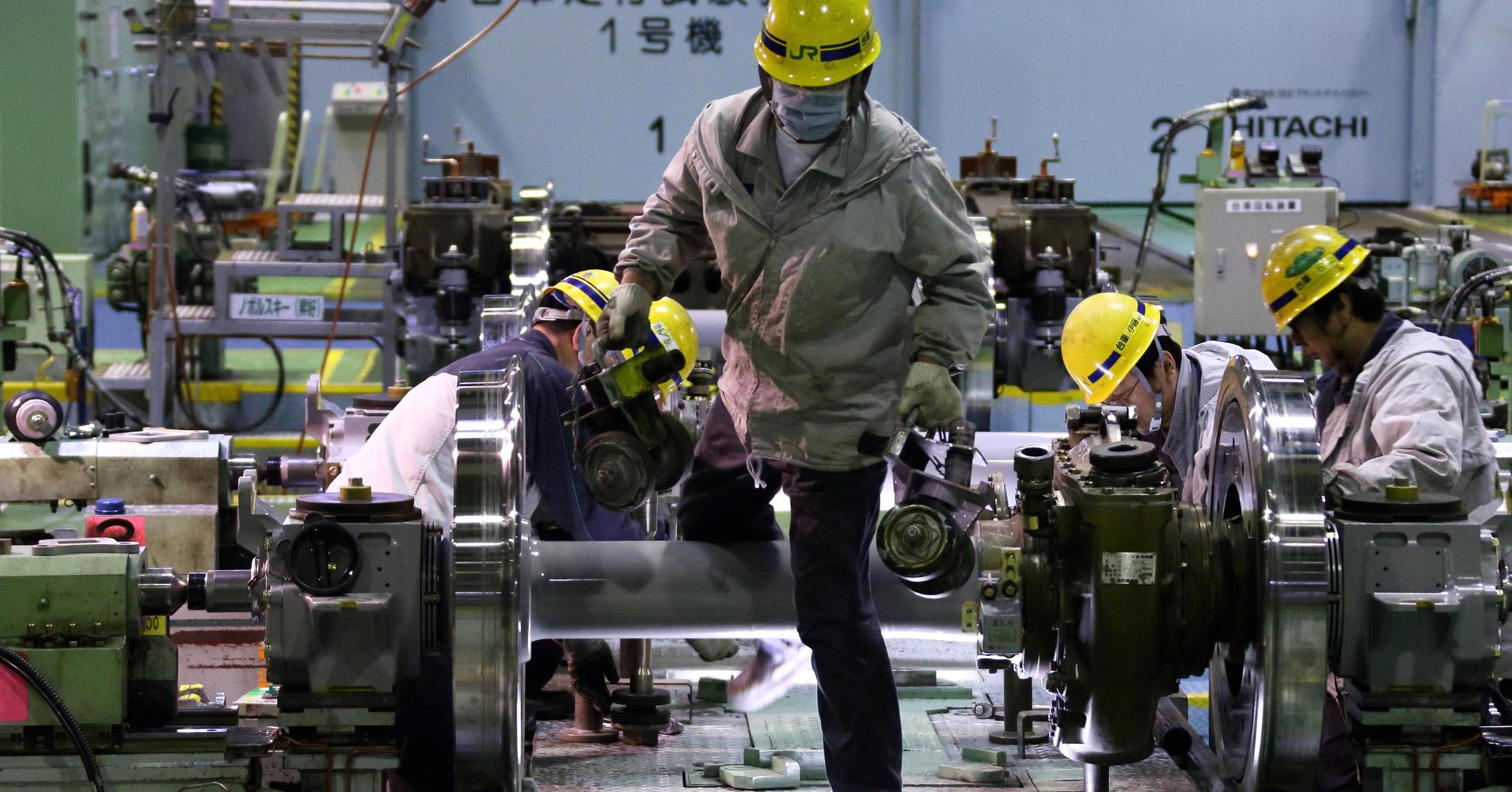Japan's core inflation (excluding food) increased for the fifth straight month in May, 2017. It grew 0.4% in the month compared with 0.3% in April. This was the fastest rise in more than two years, but it still remains far from the Bank of Japan's 2% target rate.
Japan's GDP grew 0.3% sequentially in the first quarter of 2017, at the same rate as the previous quarter. Consumer confidence improved marginally to 43.6 in May compared with 43.2 in April, while the business confidence index increased to 12 in the first quarter of 2017 compared with 10 in the fourth quarter of 2016, Chicago-based Zacks Equity Research reported.
Japan’s gross domestic product grew an annualized 1% in the first quarter of 2017. Though this was below market expectations of 2.2%, Japan is still witnessing its longest growth streak in over a decade. This is primarily being attributed to the surge in exports.
However, Japan slipped into an unexpected trade deficit in May. Imports surged 17.8% in the month compared with market estimates of 14.5%. The trade deficit amounted to around 203.4 billion yen ($1.8 billion). However, the finance ministry attributed this deficit as seasonal, owing to multiple national holidays in the month.
Moreover, in its last policy setting meeting on June 16, 2017, the Bank of Japan voted to keep its benchmark interest rate steady at -0.1%. In order to maintain this target rate, the central bank vowed to continue purchasing assets to the tune of 80 trillion yen ($727 billion).
The Organization for Economic Cooperation and Development earlier this month upgraded Japan’s GDP growth forecast to 1.4% for 2017, up from its earlier projection of 1.2%. It cited robust exports as the primary driver of growth.
Although the country's unemployment rate increased to 3.1% in May compared with a 2.8% increase in April, the participation rate recorded a nine-year high, as it surged to 60.8% in May compared with 60.3% in April. Moreover, Japan's job to applicant ratio touched a 43-year high, recording 1.49 in May compared with 1.48 in April.
However, the country's industrial production declined 3.3% in May compared with the previous month. This clouds the country's growth outlook. Moreover, the uncertain path of oil prices adds to the agony.
Moreover, Japan's household spending declined 0.1% year over year in May, showing signs of subdued wage growth.
Recovery in Manufacturing
Japanese manufacturers are planning to increase investment as demand for exports recovers, surveys showed Monday in upbeat news for Prime Minister Shinzo Abe as he copes with a major political setback following his party's defeat in Tokyo metropolitan elections, ABCnews reported.
The Bank of Japan's quarterly "tankan" survey of business conditions showed the main index for business conditions of large manufacturers rose in the April-June quarter for the third straight quarter, from 12 to 17. Other large companies also were upbeat.
In other positive news for the world's third largest economy a separate survey of factory purchasing managers also indicated the outlook improved in June, for the 10th consecutive month.
Stronger demand from China and other Asian markets is driving a recovery in exports that has stretched the capacity of some manufacturers and other employers, though forecasts suggest conditions will deteriorate in coming months.
The headline diffusion index measuring big manufacturers' sentiment stood at plus 17 in June, the BoJ's quarterly "tankan" survey showed, its third straight quarter of improvement and up from plus 12 in the previous survey in March.
This exceeded a median market forecast of plus 15 and was the highest since March 2014, as automakers and machinery firms benefited from robust demand in Asia.
"Taken together, the survey backs up the BoJ's optimism on the economy," said Yuichiro Nagai, an economist at Barclays Securities.
"But a gap remains between a strong economy and tepid inflation. If the BoJ revises down its price forecasts at the upcoming meeting, investors will recognize that an exit from ultra-loose monetary policy will be some time away."
Big non-manufacturers' sentiment index stood at plus 23, up from plus 20 in March and matching a median market, the tankan showed. It was the second straight quarter of improvement and the highest level since December 2015.


